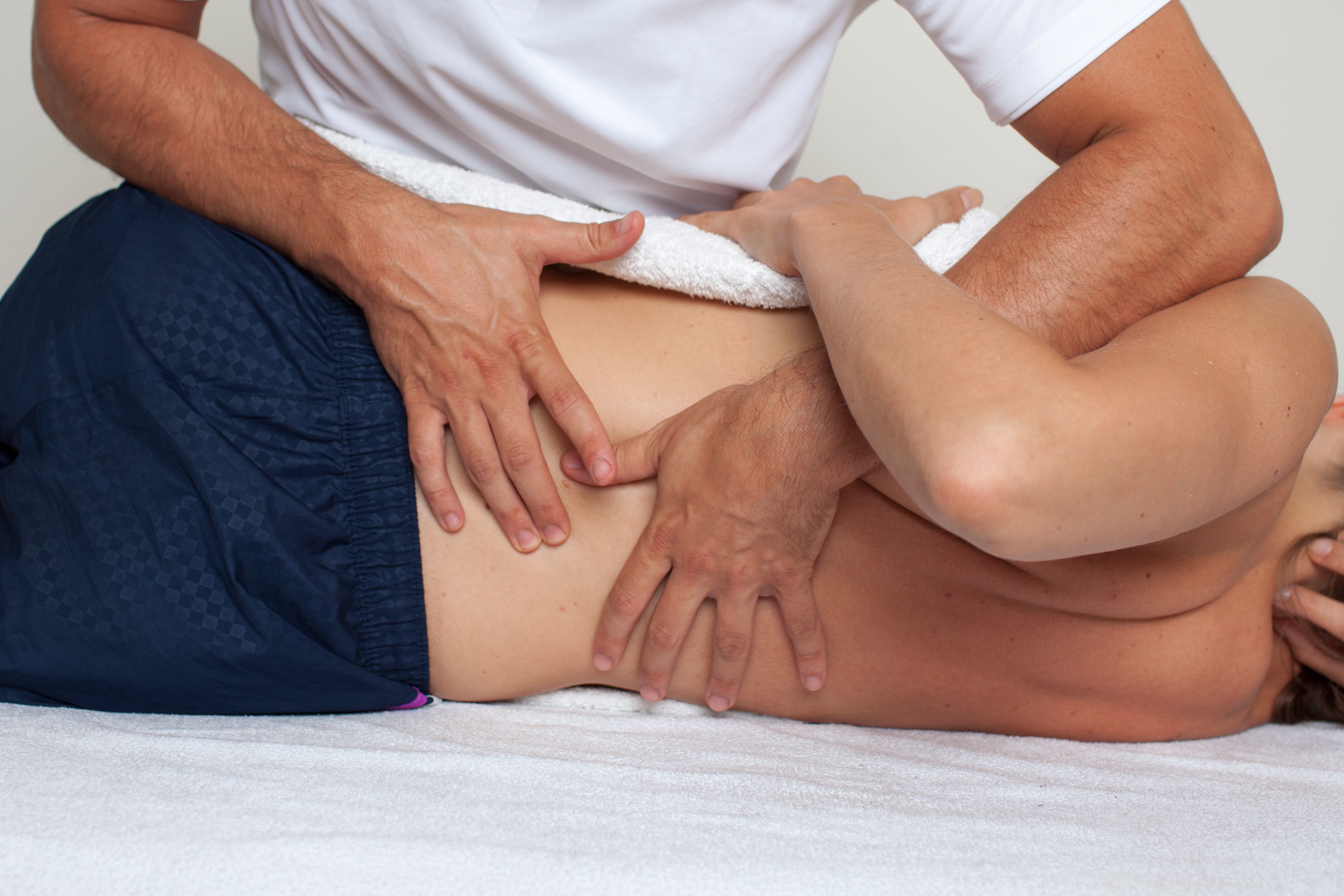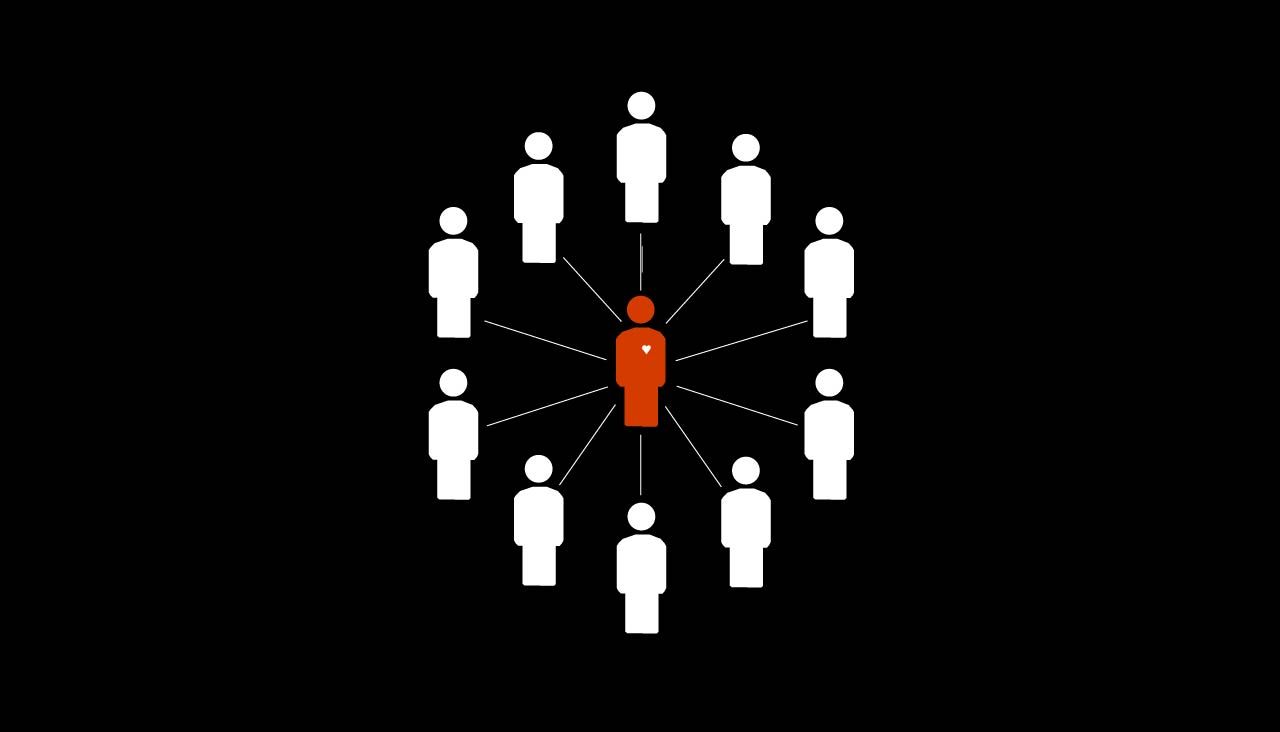
Chronic or acute back pain? Discover how osteopathy can help you feel better
Annually, in Quebec, there are approximately 2 million consultations in osteopathy(1). 30% of initial consultations are due to back or pelvic pain (2).
Here are some definitions regarding back pain: back pain can be defined as dorsal pain, lumbar pain, or sacral pain. A dorsal pain involves pain in the region of the dorsal vertebrae (3), a lumbar pain involves pain at the level of the lumbar vertebrae (4) and a sacral pain involves pain in the region of the sacrum (5). It is important to note that the pain can be felt in the dorsal, lumbar, or sacral region (sacrum), but can also be radiating and extend to the ribs or even into the upper and/or lower limbs.
A BIT OF ANATOMY TO UNDERSTAND BACK PAIN.
The spine, commonly called the vertebral column is made up of 33 vertebrae, consisting of three curves (2 lordoses and 1 kyphosis) and divided into five sections:
- 7 cervical vertebrae;
- 12 thoracic vertebrae;
- 5 lumbar vertebrae;
- 5 fused vertebrae that make up the sacrum;
- the coccyx;
The cervical, thoracic, and lumbar vertebrae are separated by an intervertebral disc. This disc, which is filled with fluid, allows the spine to absorb shocks during movement, aids in the mobility of the spine, and provides better cohesion between the vertebrae. The spinal column enables body mobility, but also protects the spinal cord. The spinal cord is a component of the nervous system. It starts from the brain and goes down to the first lumbar vertebra (L1), this part is called the central nervous system (CNS). After the first lumbar vertebra, the nerves will branch off from each other and form a nerve segment called the cauda equina. Moreover, peripheral nerves will emerge from the spinal cord to reach the upper and lower limbs. This part is called the peripheral nervous system (PNS).
WHERE DO BACK PAINS COME FROM?
Back pain, lower back pain, or sacral pain can have various causes :
- Mechanical: Mechanical pain originates from improper movements, poor posture or postural tendencies, muscle tension, etc.
- Joint: Joint pain originates from vertebral hypomobility that limits the mobility of the spine. It can also be due to degeneration or a pathology such as osteoarthritis, hernia, or arthritis.
- Muscular: Muscular pain originates from a spasm that can also lead to compensatory postural adjustments.
- Visceral: Pain that may have a visceral component consists of tension in the viscera that attaches to the vertebrae, creating reduced mobility of the spine.
- Scar tissue: Scar adhesions that subsequently limit the mobility of surrounding structures can cause pain and a lack of mobility in the spine.
- Traumatic: An impact to the back from a fall, an incident, or otherwise, can cause pain in the spine.
WHAT DOES AN OSTEOPATH DO FOR BACK PAIN?
The goal of the osteopath is to understand the cause of your pain and address it with the aim of reducing symptoms and preventing an increase in pain. Knowing that the cause of pain can be local or referred, the osteopath will take all elements of the history into consideration in order to make their assessment and treatment plan. Through therapeutic manipulations, the osteopath aims to increase the mobility of the compromised structures and to reduce muscle and fascial tension. Throughout the session, the osteopath will explain their manipulations and the connection to your issue. Moreover, they will give you advice on your posture and possibly some exercises to maintain long-term relief of the problematic areas.
WHEN TO CONSULT?
- As a preventive measure: it is possible to consult an osteopath even if you don't have back pain. In everyday life, our bodies endure shocks and/or we adopt less ergonomic postures. Because of this, we develop tensions. It can then be relevant to reduce these tensions in order to prevent an imbalance and certain compensations.
- For pain: In case of back pain, lower back pain, sacral pain, and sciatica, but also for radiating pain in the upper or lower limbs.
OTHER PAGES THAT MIGHT INTEREST YOU
Neck pain, have you considered seeing an osteopath?
Obstetric Osteopathy: How can an osteopath help me during my pregnancy?
BIBLIOGRAPHIC REFERENCES
(1) Courtecuisse, B. (2022, January 18). When will there be a professional order for osteopaths? La Presse. https://plus.lapresse.ca/screens/e1ea4b91-b13a-4daf-89e3-012f06f5b9ad__7C___0.html (https://plus.lapresse.ca/screens/e1ea4b91-b13a-4daf-89e3-012f06f5b9ad__7C___0.html)
(2) Morin C, Aubin A (2014) Primary Reasons for Osteopathic Consultation: A Prospective Survey in Quebec. PLoS ONE 9(9): e106259. doi: 10.1371/journal.pone.0106259 PMID: 25184204
(3) Back pain. (n.d). In Larousse Dictionary online. https://www.larousse.fr/dictionnaires/francais/dorsalgie/26503 (https://www.larousse.fr/dictionnaires/francais/dorsalgie/26503)
(4) Low back pain. (n.d). In Larousse Dictionary online. https://www.larousse.fr/dictionnaires/francais/lombalgie/47718 (https://www.larousse.fr/dictionnaires/francais/lombalgie/47718)
(5) Sacralgia. (n.d). In Larousse Dictionary online. https://www.larousse.fr/encyclopedie/medical/sacralgie/15953 (https://www.larousse.fr/encyclopedie/medical/sacralgie/15953)

Back pain: how physiotherapy relieves lo...
Persistent lower back pain? Discover how physiotherapy can effectively relieve your backache with a ...
Lire plus...
Mental health and rehabilitation: an und...
Mental health, often overlooked, plays a crucial role in the success of a rehabilitation process. Di...
Lire plus...
Osteopathy and cranial deformities: a ge...
Does your baby have a cranial deformity? Pediatric osteopathy, complementary to physiotherapy, can p...
Lire plus...